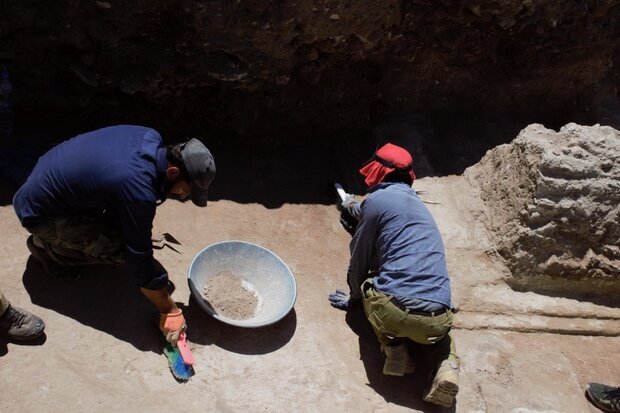Ancient tombs, relics, architectural vestiges discovered in southern Iran

TEHRAN – A team of Iranian archaeologists has unearthed some ancient tombs, relics, and architectural vestiges in a survey they recently conducted in the southern Fars province.
The survey probed into Hirbodan hill and its surroundings, which is estimated to date from some 4,500 years ago.
“The findings of this excavation include human burials, architectural structures and inscriptions carved on the edge of an earthenware vessel,” Iranian archaeologist Sepideh Jamshidi-Yaganeh, who leads the survey, said on Sunday.
In this archaeological season, five trenches were carved, which also resulted in the discovery of relics, which are known as Kaftari Ware, distinctive ceramic vessels dated to the late 3rd and early 2nd millennia BC.
According to Encyclopedias Iranica, Kaftari ceramics were named and first characterized by Louis Vanden Berghe based on surface surveys and limited soundings carried out in the Marv Dasht region of the Kur River basin in highland Fars. The range of stylistic variation in the ceramics that fall under this name has been most clearly shown by more systematic surveys across the Kur River basin and excavations at the site of Tall-e Malyan, both led by William Sumner.
Hirbodan hill was is located near the once heart of the Achaemenian Empire (c. 550–330 BC), which was stretching from Ethiopia, through Egypt, to Greece, to Anatolia (modern Turkey), Central Asia, and India.
Throughout the late prehistoric periods, Elam was closely tied culturally to Mesopotamia. Later, perhaps because of domination by the Akkadian dynasty (c. 2334–c. 2154 BC), Elamites adopted the Sumero-Akkadian cuneiform script.
The modern-day provinces of Ilam and Khuzestan were once the seat of power of the Elamite kingdom.
Elamite language, extinct language spoken by the Elamites in the ancient country of Elam, which included the region from the Mesopotamian plain to the Iranian Plateau. According to Britannica, Elamite documents from three historical periods have been found. The earliest Elamite writings are in a figurative or pictographic script and date from the middle of the 3rd millennium BC.
Documents from the second period, which lasted from the 16th to the 8th century BC, are written in cuneiform; the stage of the language found in these documents is sometimes called Old Elamite.
The last period of Elamite texts is that of the reign of the Achaemenian kings of Persia (6th to 4th century BC), who used Elamite, along with Akkadian and Old Persian, in their inscriptions. The language of this period, also written in the cuneiform script, is often called New Elamite.
AFM
No comments:
Post a Comment